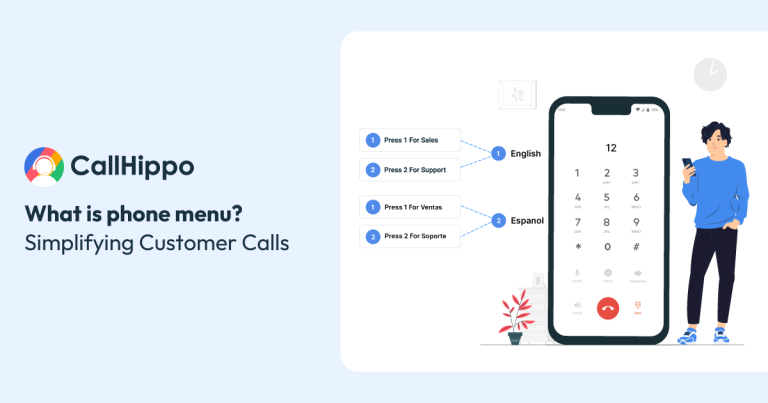
It is extremely challenging for the average business owner to navigate the world of workplace communications. New technological innovations are appearing every day, and if you are investing in a business telephone system, it’s important to know exactly what you’re getting yourself into.
Specifically, making the decision on whether to move to VoIP (Voice Over Internet Protocol) or remain with legacy Public Switched Telephone Network (PSTN) services can be complex, with both options having their merits and drawbacks.
In this article, we will examine the technology, features, advantages and disadvantages of PSTN vs. VoIP in an attempt to help you determine which option is better for your business. However, whatever decision you make, it is important to note that the support of copper line networks is approaching its end of life in many regions. This implies the termination of PSTN services and the forced migration of subscribers to digital communication technologies.
PSTN vs. VoIP: What’s the difference?
Traditional PSTN, also known as landline or plain old telephone service (POTS), has been the standard telecommunication system for decades. PSTN uses dedicated copper lines to transmit analog voice signals, and circuit switching to connect endpoints during phone calls. Today, even these legacy services have become increasingly digital, as new last-mile infrastructure – such as fiber optic cables – replaces copper lines.
VoIP is a more recent technology that eliminates the need to use circuit-switched networks for supporting phone calls. With VoIP, voice signals are converted into digital packets that are transmitted over an Internet Protocol (IP) network, which can be the public Internet or a private WAN service.
Knowing the differences between these two systems will help you make the best decisions for your business and set yourself up for success and growth. Let’s examine the specifics of each system to evaluate their suitability for your business.
PSTN vs. VoIP comparison
Reliability and Call Quality:
PSTN is generally considered more reliable than VoIP systems. This is mainly due to the PSTN being based on highly dependable and proven infrastructure that operates independently of power outages and internet connectivity issues, ensuring consistent call quality and uptime. Since PSTN uses dedicated lines, it typically offers excellent call quality with minimal latency or service interruptions. PSTN can often provide a higher level of call clarity when compared to VoIP, especially in situations where the IP network experiences limited or fluctuating internet bandwidth.
VoIP relies on an Internet connection to transmit calls, and any disruption of this connection will affect the availability and quality of the delivered services. VoIP services may be impacted by network issues such as bandwidth, network congestion, jitter, latency and packet loss. It is important to note that the reliability of VoIP has significantly improved in recent years, allowing the consistent delivery of excellent audio quality. This advancement is mainly due to the widespread availability of high-speed internet connections and technologies that ensure VoIP QoS (Quality of Service). In addition, most VoIP service providers have implemented system redundancies at the network level to mitigate the impact of internet disruptions and ensure robust call quality.
Regarding the dependence on power for communications, PSTN does not rely on external power sources at the customer premises. Even during outages, traditional landline phones can continue to function, as they are powered directly from the telephone exchange. In comparison, premise-based equipment for supporting VoIP services is dependent on electrical power. However, this is generally not considered a critical reliability factor, as generic backup power solutions are typically installed alongside VoIP hardware.
Flexibility and Scalability:
A shortcoming of PSTN is its lack of flexibility and scalability. Expanding or reconfiguring a traditional phone system often requires physical rewiring and additional hardware installations. This process can be time-consuming and costly, and is an obstacle for growing businesses with changing communication needs.
One of the most compelling features of VoIP is its outstanding flexibility and scalability, making such systems suitable for businesses of all sizes and enterprises having dynamic communications requirements. Adding or removing lines and features can be done without significant or even any infrastructure changes, very often through easy-to-use, self-service online user portals.
Because VoIP systems communicate via generic IP networks, user endpoint mobility is a fundamental element of this architecture. Therefore, VoIP is ideal for maintaining remote work environments, allowing employees to use softphones or mobile apps on their smartphones, laptops or tablets to make and receive calls from anywhere with an Internet connection. This flexibility allows businesses to effectively support remote and distributed teams.
VoIP systems typically offer centralized management, making it easier to maintain the communication infrastructure. In general, IT administrators can handle user configurations, access call logs and analytics, and manage system updates from a centralized online interface.
Another advantage of using VoIP is that this service allows businesses to have virtual phone numbers from different regions or countries, enabling the establishment of a global business presence without physical offices in those locations. Additionally, number portability makes it possible to retain existing phone numbers when switching from PSTN to VoIP or when moving between VoIP providers, thereby reducing disruptions and ensuring communication continuity.
Advanced Features and Integration:
Innovation is a key issue in the PSTN vs. VoIP debate. VoIP is an advanced communication technology that offers a wide range of features, including voicemail, call forwarding and call routing, automated attendants and voicemail to email transcription. In addition, VoIP can be integrated with ubiquitous communication tools like email and instant messaging, and business applications such as customer relationship management (CRM) software, thereby supporting unified communications. These capabilities are highly beneficial for businesses, facilitating streamlined workflows, improved productivity and enhanced customer interactions. VoIP supports not only voice calls, but also the transmission of other rich media formats such as video and images, enabling video conferencing, screen sharing and multimedia collaboration, boosting teamwork within an organization.
As a mature legacy technology, PSTN provides essential voice functions such as call waiting, caller ID, caller redirect and voicemail. However, integrating PSTN with present-day productivity tools if not always possible and, if implemented, may require additional hardware and third-party services.
Cost of Services:
VoIP often provides significant cost savings when compared to PSTN services. With VoIP, calls are transmitted over the internet, eliminating the need to carry data over dedicated phone lines. These cost efficiencies are especially notable in long-distance and international calling, where the use of VoIP allows for the minimization or even elimination of voice traffic charges.
Traditional PSTN systems generally involve high setup and maintenance costs due to the need for dedicated physical infrastructure, specialized hardware components and any required technical support. VoIP, on the other hand, often totally eliminates the need for costly infrastructure investment, with services being supported in the cloud and traffic being carried over the Internet. In addition, VoIP providers usually offer flexible pricing plans, allowing businesses to easily scale their communication requirements.
Security:
The PSTN is generally considered more secure than VoIP systems, as this service operates on dedicated networks with physical connections, making it less susceptible to cyberattacks when compared to VoIP. The “closed” PSTN architecture makes it harder for hackers to gain unauthorized access to traffic, perpetrate eavesdropping or intercept calls. In the case where increased security is required for PSTN systems, encryption measures can be implemented.
The use of VoIP introduces certain security vulnerabilities and considerations, mainly because this service relies on internet protocols and traffic often being carried over the public Internet. Such systems are potentially susceptible to hacking and unauthorized access, as well as to Distributed Denial of Service (DDoS) attacks which can overload the network and disrupt services. However, it is important to note that VoIP systems can be effectively secured with the correct measures in place. These controls include security protocols, encryption, the employment of firewalls and intrusion detection systems, and other safeguards to protect voice calls and user data.
Ultimately, the level of security and integrity of both PSTN and VoIP systems depends on the system implementation, adherence to security protocols, and any additional measures taken to protect both the network infrastructure and the transmitted voice and data traffic.
Regulatory Compliance and Emergency Services:
The PSTN operates within a well-established regulatory framework. Global telecommunications regulatory bodies and government agencies oversee and enforce compliance through regulations related to PSTN infrastructure, service quality, pricing and consumer protection. This rigorous level of compliance can be particularly important for businesses operating in highly regulated sectors, where adherence to specific standards is mandatory.
Regulatory compliance for VoIP systems can vary widely, and the level of strictness is dependent on the jurisdiction and specific regulatory framework. Some jurisdictions may have mature, well-defined and comprehensive regulatory structures specifically addressing VoIP, while others may have more general requirements that apply to all telecommunication services. However, as with PSTN, it is essential for VoIP service providers to comply with applicable regulations in order to maintain trust, protect user interests, and ensure the responsible provision of VoIP services.
When it comes to emergency services, the PSTN traditionally has advantages over VoIP. This is mainly due to location accuracy, where PSTN systems have mechanisms in place to precisely determine the caller’s physical location and to transmit that location information when an emergency call is made. This strategy is crucial for emergency responders to quickly locate and provide assistance to the caller. In addition, PSTN systems often prioritize emergency calls over other types of calls, ensuring that emergency calls receive immediate attention and are not delayed or blocked due to network congestion.
Unlike PSTN, determining the precise location of a VoIP caller can be more complex. VoIP calls are often made using mobile devices or internet-connected phones, which may have constantly changing locations. To solve this issue, VoIP is now leveraging technological advancements to provide enhanced dynamic location tracking using GPS, Wi-Fi positioning and Bluetooth beacons to accurately identify the position of an emergency caller. Given the importance of emergency calling, regulatory bodies and VoIP service providers are continually working to make VoIP a highly reliable option for emergency communications.
A significant strategic decision to be made…
PSTN has been the traditional telephone system for decades, and many users are familiar and comfortable with its interface and functionalities. This comfort factor may be an impediment to making changes, but a careful re-evaluation of the continued use of legacy phone services is necessary due to the many advantages offered by VoIP. In addition, the pending end-of-life faced by the PSTN in many regions may be the deciding consideration in the PSTN vs. VoIP debate.
Clearly, the trend is shifting toward VoIP as this technology continues to advance. While PSTN still has its merits, VoIP’s advantages in terms of cost, scalability, advanced features, mobility and integration align with the needs of modern businesses that are looking to modernize their communication systems and improve efficiency.
The choice between PSTN vs. VoIP ultimately depends on the specific requirements, priorities, budget and long-term communication goals of each business. Making changes to the communication services that we are so dependent upon is a complex undertaking, and consultation with a reputable telecom service provider is advised.




